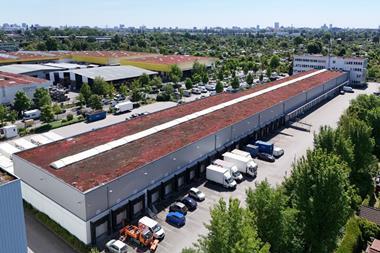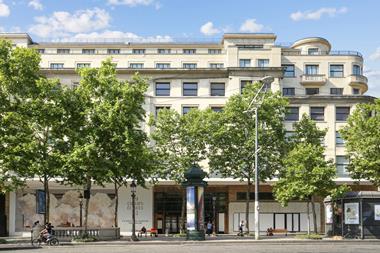Paris has emerged as the most attractive city for residential investors in Europe, according to Patrizia’s European Living Cities Index 2022.
Patrizia’s survey provides analysis on 142 European capitals and larger cities throughout Europe to determine which are most attractive and most liquid, to help investors develop a diversified European residential portfolio.
While London ranks highest in terms of market fundamentals, Paris is top overall, with the highest score in innovation. Berlin joins Paris and London in the top three.
Table of top European cities according to PATRIZIA’s latest analysis
| RANK | 2022 |
|---|---|
|
1 |
Paris |
|
2 |
London |
|
3 |
Berlin |
|
4 |
Zurich |
|
5 |
Munich |
|
6 |
Vienna |
|
7 |
Madrid |
|
8 |
Copenhagen |
|
9 |
Stockholm |
|
10 |
Helsinki |
Within the sub-groups in the Index, London ranked first for market fundamentals, Luxembourg for location quality, Zurich for connectivity and Paris for innovation. Swiss cities dominated in location quality and connectivity, taking five and four of the top 10 places, respectively.
Explaining the rationale behind the index, Dr Marcus Cieleback, chief urban economist at PATRIZIA, said: “The Patrizia Living Cities Index augments the attractiveness ranking with a liquidity indicator based on recorded institutional transaction activity, reflecting how active the institutional residential market in each city has been over the past four years.
”Combining these two dimensions – ranking and liquidity – results in a matrix, enabling a segmentation of the more than 100 cities according to their long-term attractiveness and liquidity, to identify target cities that would suit specific strategies or risk-return requirements”
He added that while Paris came out on top in the 2022 report, ”it is important to note that all the top-10 cities in the overall ranking are strong because they have the best market fundamentals and their attractiveness is balanced with excellent liquidity. These top 10 cities also all have a great location and connectivity, and tend to be very innovative, strengthening their proposition to investors”.
Sebastian Dietert, a fund manager at Patrizia, said: “The investment decisions we take for our €1.8bn (£1.6bn) AUM Living Cities residential strategy, now targeting the next milestone of €3bn, uses the same data intelligence analytics as the Living Cities Index. Leveraging this data plus the local expert knowledge on the ground is what makes our assets futureproof.”
Dietert stressed that Patrizia’s fund strategy is already invested in half of the top 10 cities in the Living Cities Index (Berlin, Copenhagen, Munich, Stockholm, Helsinki), adding: ”We are actively looking for further attractive opportunities in the other top cities where we are currently not present”.
“Furthermore,” according to Dietert, “the Index provides detailed data in its subcategories which guides our Living Cities strategy to cities further down the list overall which excel in a particular area, or areas, enabling us to have a well-balanced portfolio. For example, the stable income return and long-term capital growth seen in Barcelona, allied to its high-performing connectivity and innovation data in the Index, persuaded us to invest on behalf of our clients in one of Spain’s largest-ever residential transactions in the city.”
Cieleback points out that the value of the Index “lies in the depth of the data”.
He added: ”While a city may rate well in terms of its attractiveness, having an attractive city you can’t invest in is pointless, which is why the Index has a second dimension focusing on liquidity. That provides investors with a matrix to help them develop a European residential real estate investment strategy, enabling them to diversify their portfolios by location and risk profile and identify target cities according to risk-return requirements.”
The Index, which will be updated by the end of 2023, determines its ultimate ranking by analysing 48 indicators, with data obtained from the Eurostat Urban Audit, the Eurostat database, the United Nations, Oxford Economics and various other sources. The data also aligns with smart city fundamentals, as developed by Patrizia as a key enabler of smart cities.
It analyses a range of demographic and economic aspects of cities, including economic strength, location, connectivity, and innovative capacity, as well as metrics around liveability, quality of life, ESG and sustainability. These metrics feed into ratings for market fundamentals and attractiveness. The Index then augments this analysis with a liquidity indicator based on recorded institutional transaction activity, reflecting how active the institutional residential market in each city has been over the past four years.
In terms of a city’s attractiveness, several quality-of-life indicators relating to ESG, such as green space per inhabitant (sqm), the annual average concentration of nitrogen dioxide (resulting from the burning of coal, oil, diesel, gas and other fossil fuels), as well as the number of apartments divided by the number of households living in apartments, are included. In addition, a score rating the amount and quality of amenities provided within each city is also included, using Patrizia’s Amenities Magnet – a digital tool that measures the attractiveness of a location.
To read the latest edition of the latest IPE Real Assets magazine click here.























